Seeing Sideways with the Cambo Actus
***NOTE: This article was written in 2016. Since then, some important changes have occurred. At the time, only ONE mirrorless camera manufacturer existed on the market (Sony, referenced in this article). But now, 8 years later, every manufacturer except Phase One and Pentax offer mirrorless bodies. So there are many more choices. But many of the core concepts discussed here are still relevant. Additionally, more lens options – both from Cambo and from other manufacturers – have presented themselves.
In the summer of 2014, Cambo introduced the Cambo Actus View Camera System, an amazingly small view camera that fits in a Messenger Bag and is compatible with mirrorless cameras, DSLR cameras, medium format digital backs, and accepts a huge variety of lenses that can all then become tilt/shift/swing lenses. What a great development for photographers!
First Look: Cambo Actus, A Tiny Miracle
If you’ve never experienced the ecstasy of complete control over exactly what is in your frame, the perspective of what is in your frame, what is in or out of focus within your frame, all without moving your tripod, then you owe it to yourself to discover this gift. There is a warning!! Control freaks – it’s addictive. It’s like a drug! And your life … may never be the same. For the rest of you, who know what I’m talking about – well on that day, your salvation arrived.
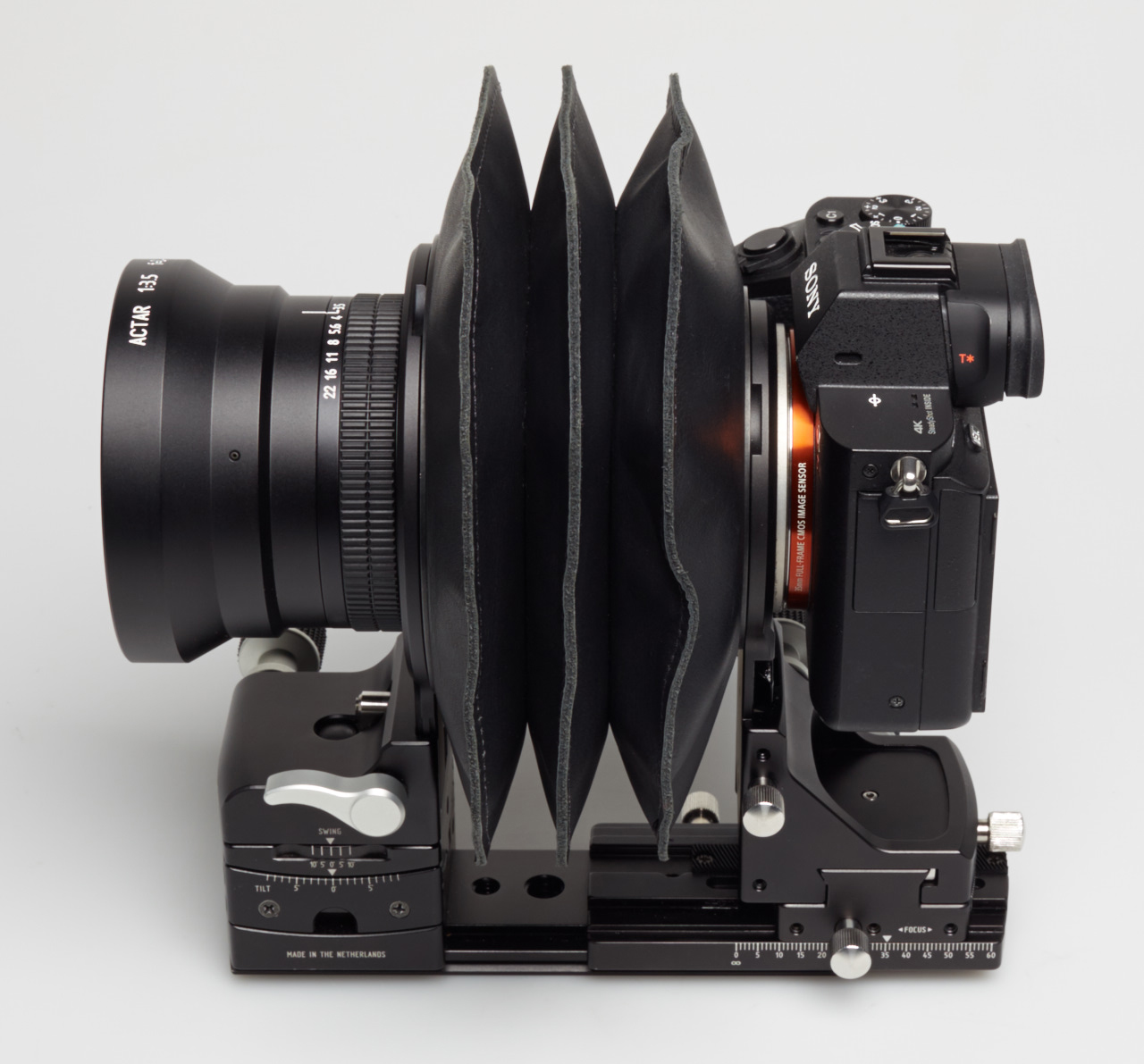
A quick backstory – today we shoot with digital cameras that produce amazing quality. Full frame 645 and 35mm digital capture devices produce quality that rivals or exceeds what was produced on 4×5 and medium format film. Yes – true! And yet, we find things to complain about. What a bunch of spoiled babies we are! But I digress…
For years, 4×5 was a standard of quality in the industry – “Oh, this job is quite important, you better shoot that on 4×5 then”. But unlike medium format cameras, 4×5 cameras provided an additional secret get out of jail free wild card above and beyond the size of the negative, which was that the cameras had the ability to completely control the framing and sharpness of all elements in the scene, and also produce the desired/corrected perspective… right then and there. Fix it in post wasn’t even a concept yet! (well, it sort of was, but not to the level of laziness we have today).
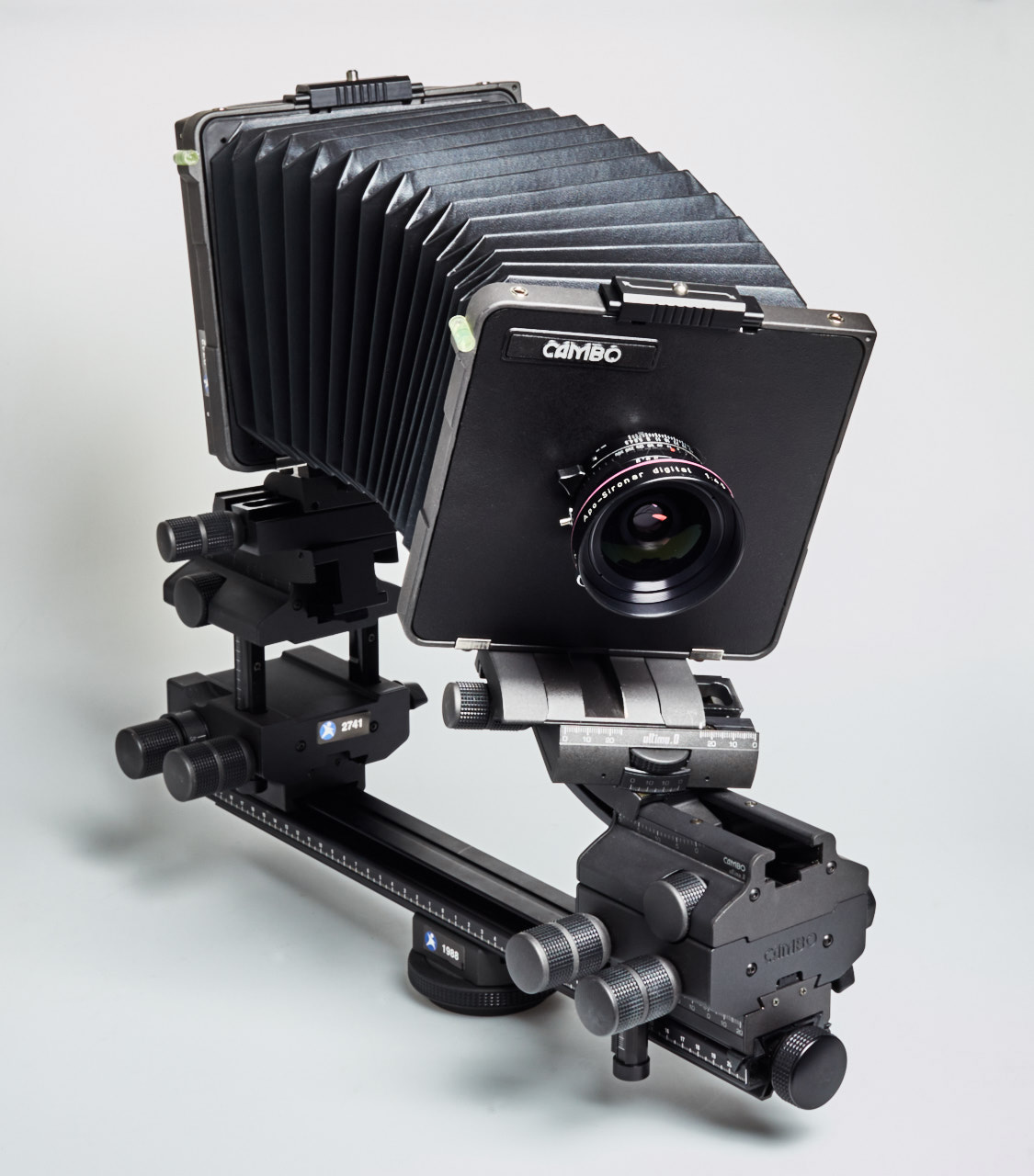
** Then digital capture came along, and with a great many photographers this traditional capability has been reduced, lost or completely discarded! Those view cameras were tossed in the closet, or sold to a fine art friend – basically they were forgotten.**
A view camera lets you capture everything exactly how you want it at the time of capture. With the photographic subject right there in front of you. Seems the best time to do this, right? Rather than 11:30 at night in front of your computer screen after 6 cups of coffee and 4 brewskies. The Cambo Actus is the product that brings this capability back and puts it on a plate for the digital masses. Now you can enjoy your late night beverages without the added pressure of digital retouching. Thank you, Cambo!
Since the launch of the Cambo Actus, we’ve received tons of questions and inquiries, mostly about lens options. The best way to answer these questions is to shoot the lenses. We do have the Cambo Actus available in our rental inventory for evaluation rentals.
Or, alternatively, you can request a sample file. You can specify the lens (if we don’t have it, you can send us yours), you can specify the scene and the conditions, etc. We’ll capture it and send you the raw files. Who does that?!?! (we do…) But the biggest questions have arisen with the use of wide angle options, because wide angle lenses present some challenges. Aw crap, nothing’s perfect.
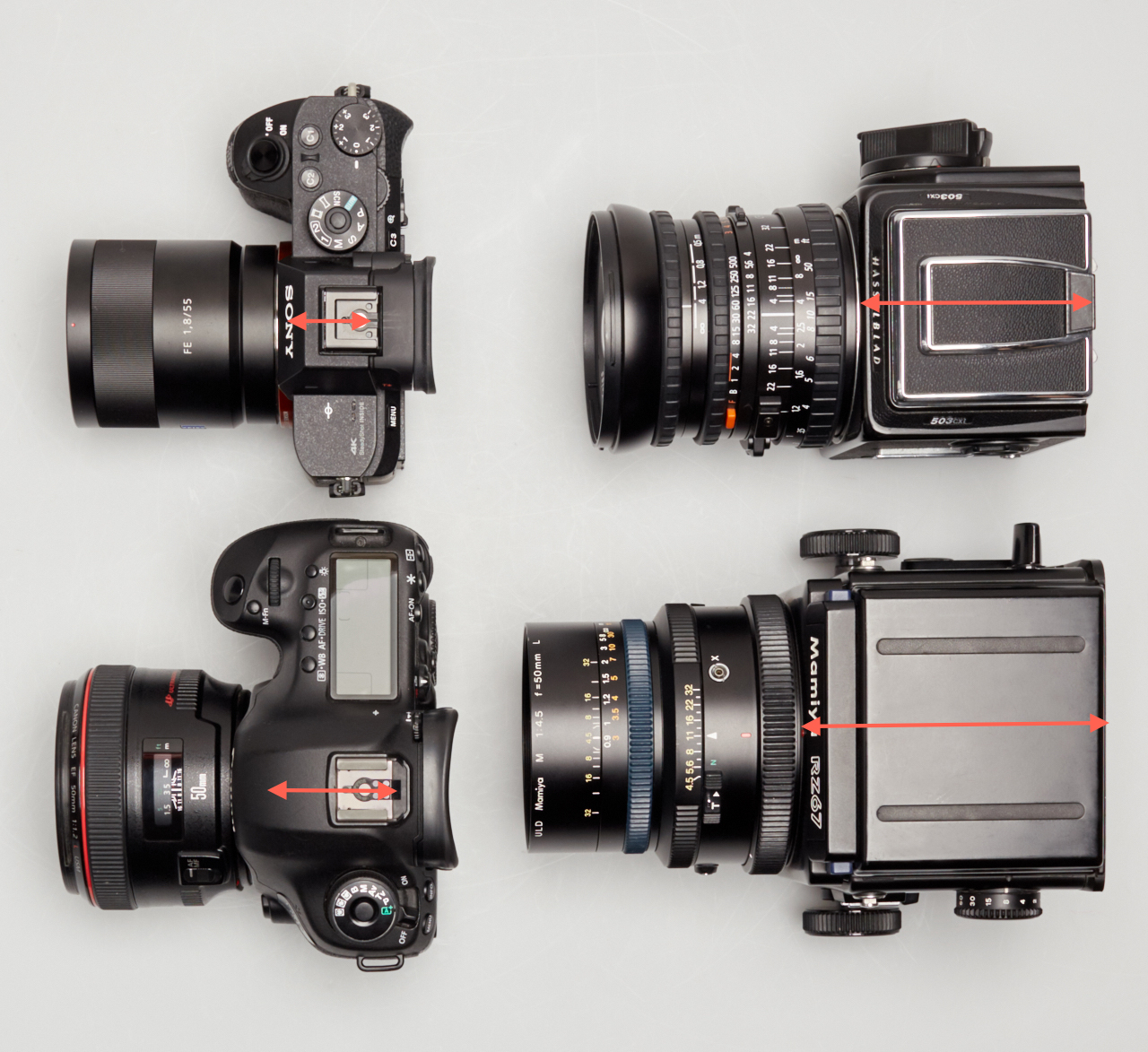
Wide Angle Challenges
Challenge #1 is that thicker camera bodies prevent wider lenses from focusing because the built-in flange distance produces a greater buffer between the optic and the imaging plane. If you mount a Canon 35mm/1.4 lens to the front of a Cambo Actus with a Canon 5DS mounted to the back, the grand total of your focus will be about 3/4″ in front of the lens. It becomes the weirdest, most limited macro lens in history.
Yet with that same stingy lens, if you swap the Canon 5DS for the Sony A7R-II, you can focus to infinity. Just the (approximately) 25mm difference in camera depth results in an attainable focus of either 3/4″ or infinity. Amazing. That is why mirrorless cameras are the ideal snugglers for any wide angle photography with the Cambo Actus – the flange distances can be a limiting factor, depending on the camera body being used. Medium format lenses do not have this limitation, because they are designed for thicker bodies to begin with.
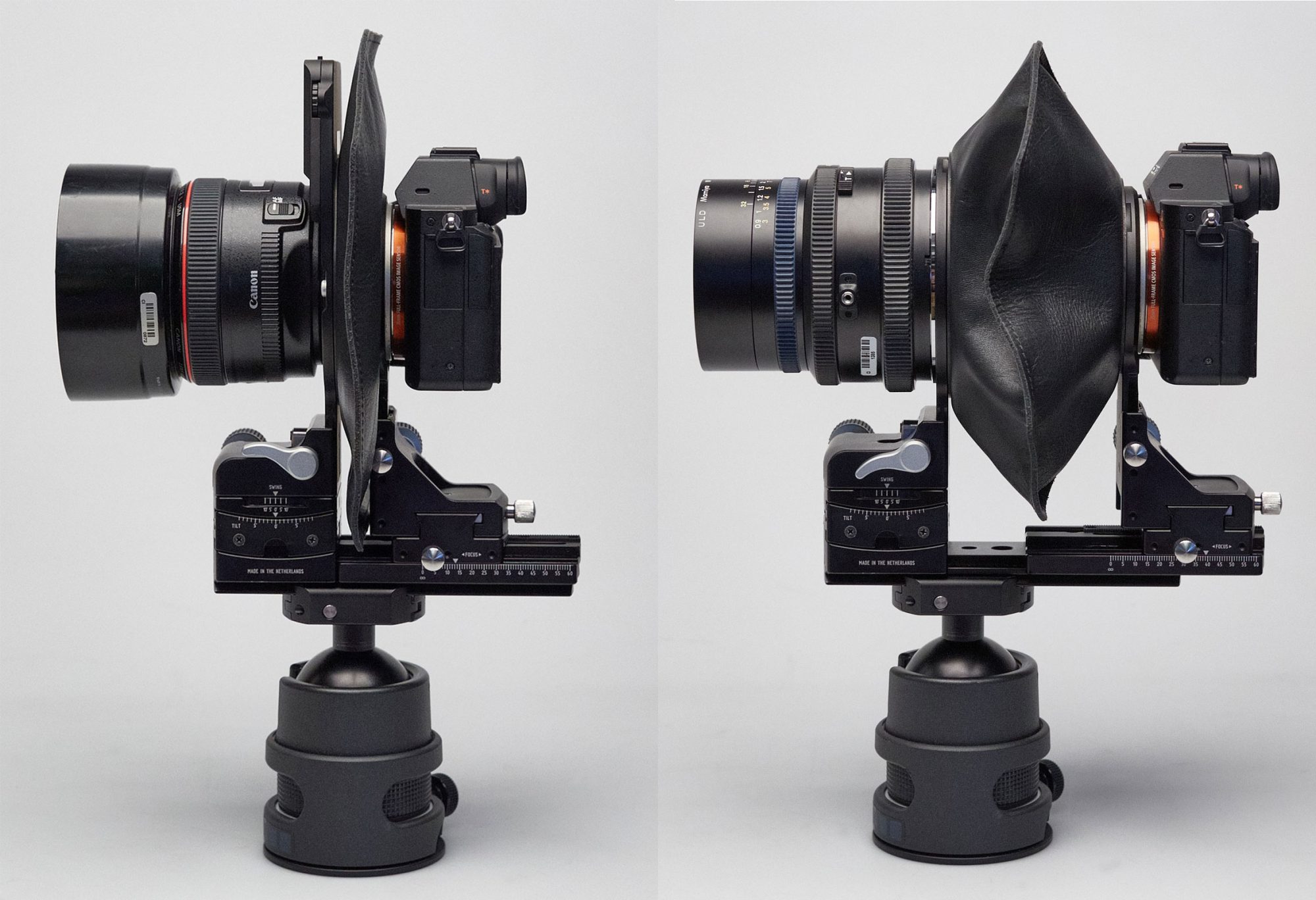
** Challenge #2 is – wait, there’s more challenges?? Fine, what is it? There is no electronic communication between the lens and the camera mounted to the Actus. Oh no, what does that mean? Let’s say you have a Sony A7R-II attached to the rear of the Actus, and a Hasselblad 40mm CF Lens attached to the front, ready to.. get.. it.. on! In between you have a leather bellows, and this leather bellows thing is keeping the Sony camera and the Hasselblad lens from completing their special purpose.
The lens and the Sony A7R mounted to the rear of Actus are making no direct contact… at all. But all is not lost – photography – just like life – is all about finding a way. The Hasselblad lens is open and the Sony on the back of the Actus can become the shutter, since the lens cannot tell the camera when to expose, or for how long. The exposure duration and ultimate triggering of the exposure is set by the Sony. But the lens aperture cannot be controlled by the Sony. Therefore …. a manual aperture ring is an essential ingredient.
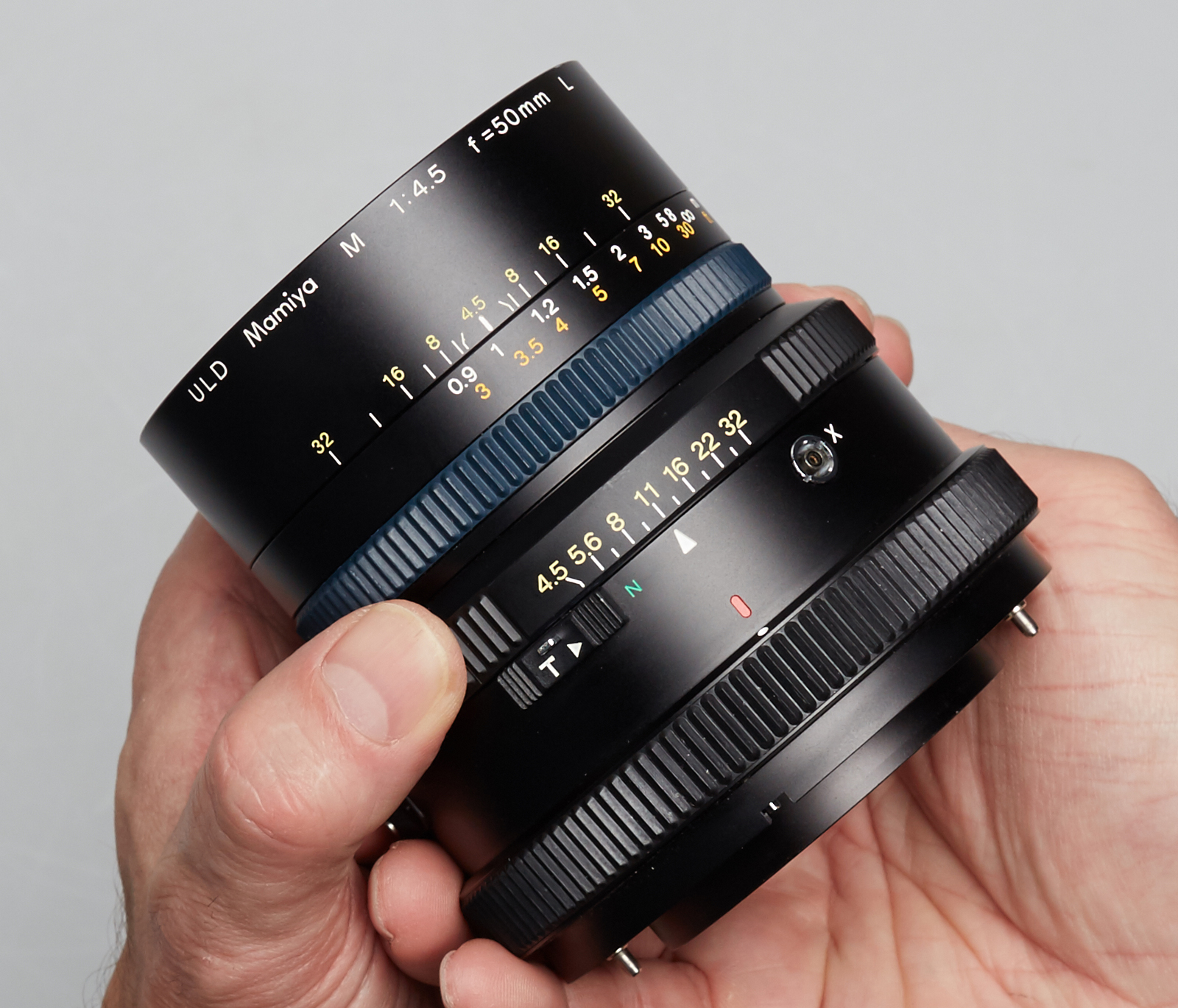
Challenge #3 is that lenses must have ample image circles to accommodate the shift or tilt or swing movements you’re attempting. They need room to move, man! Most 35mm prime lenses have a bit of extra image circle when mounted to their host camera, be it a Sony, Canon, Nikon, whatever. However, it is not so much that it allows for much in the way of movements when mounted to the Actus. Tilt/Shift lenses, on the other hand, must have a larger image circle, they need the extra headroom to allow for the native movements they’re designed for (typically about 10mm – 12mm of shift or tilt in one direction). But most standard 35mm lenses only have enough image circle for perhaps 3mm – 5mm on average, not nearly as useful.

This is why medium and large format lenses make great choices to use with the Cambo Actus, since their image circles are much larger than 35mm lenses. Shift all day and night! And in the very rare instance of a medium format tilt shift lens (like the Mamiya RZ 75TS Lens), you have essentially plunked the word “quizzically” on the Triple Word Score block of the Scrabble board, since you then have all the movements of the Cambo Actus, plus, due to the huge, huge image circle, the extra movements of the 75mm TS lens itself. Major, major win. But even a standard medium format non-Tilt/Shift prime lens will easily allow 15mm – 20mm or more of shift movement.
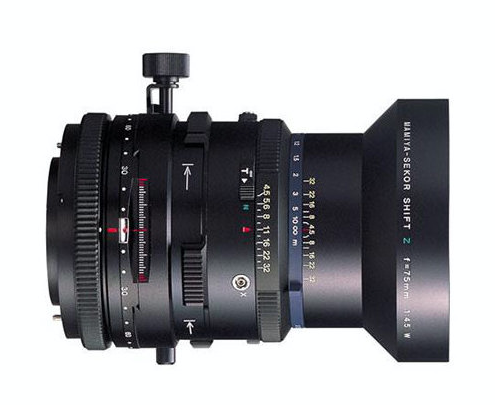
So why not just solve challenges 1/2/3 by using traditional medium or large format lenses? They have manual aperture control on the lens itself, as noted (if you were paying attention!). They have large image circles, they have ample flange specifications to acquire infinity focus, even with thicker, mirror-boxed, Canon/Nikon/Sony DSLR bodies. Every single lens in the lineup will work. And the answer is because these lenses are not very wide. Cambo makes bayonet lens adapters for all the below lenses:
* Pentax 645 Lenses
* Pentax 67 Lenses (by way of 3rd party adapter)
* Mamiya 645 Lenses
* Mamiya RB/RZ 67 Lenses
* Hasselblad CF Lenses.
These lineups represent at least 70 – 80 lenses, most of which perform excellently even on a 42 megapixel Sony A7R-II, with a 4.2 micron pixel size. However, the widest of these lenses are not very wide by 35mm standards. Even horizontally shifted and stitched to the maximum 20mm, a 40mm Hasselblad CF Lens (the widest non fisheye lens ever made for the Hasselblad V Series) only covers about 65% of what a Canon 24mm TS Lens shifted 10mm would cover. The medium and longer lenses in these lineups are great options for use with the Cambo Actus. But it’s tough getting really, really wide with these lenses.
With that said, the 40mm CF Lens shifted 20mm left and right, comes out roughly to a 20mm fov (in 35mm format equivalent). Not bad, but pushed that far to the edge of the image circle, the across the frame optical performance takes a hit at the edges. And don’t we hate hits at the edges? If critical sharpness at the edge of the frame is important, this compromise is something to bear in mind.
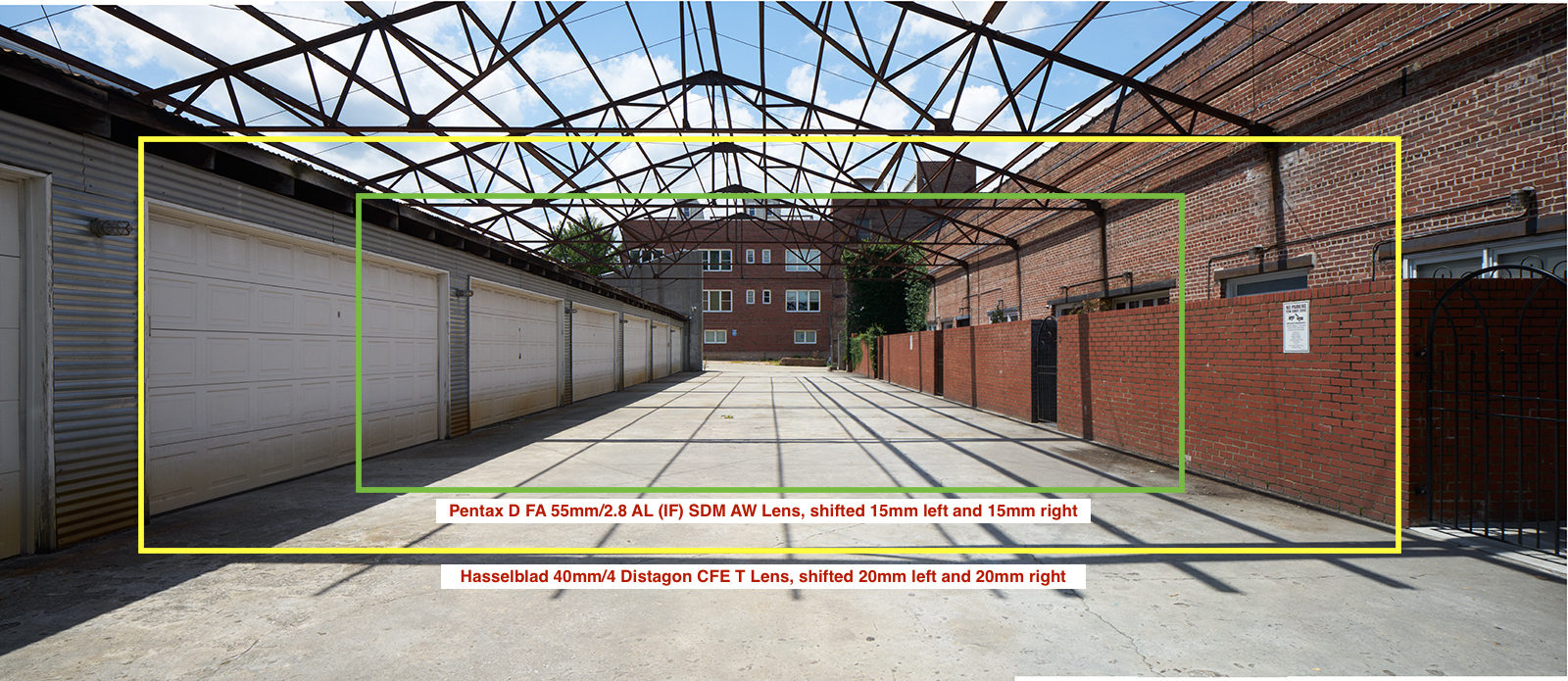
Ok, medium format lenses, if not needing ultra wide, and perhaps accepting a slight loss of tack sharp at the edges, offer some great options for wide angle capture on the Cambo Actus. And while we’re at it, let’s throw large format lenses in there as well. They may even perform better than the medium format lenses, although the modern wide versions may also have small-ish image circles. And there are modern large format lenses that are as wide as 23mm. However, there are again some practical flange limitations, and no large format lens wider than 32mm will be able to focus at infinity with a mirrorless camera/Cambo Actus combo. And even large format lenses in the 32mm – 45mm range will have some limitations. There is a modified rear standard available for these very wide lenses that embeds the bellows and removes the rotation lever, and by doing so, a precious few millimeters are gained. But shifting these very wide large format lenses may still present some issues, as seen below.
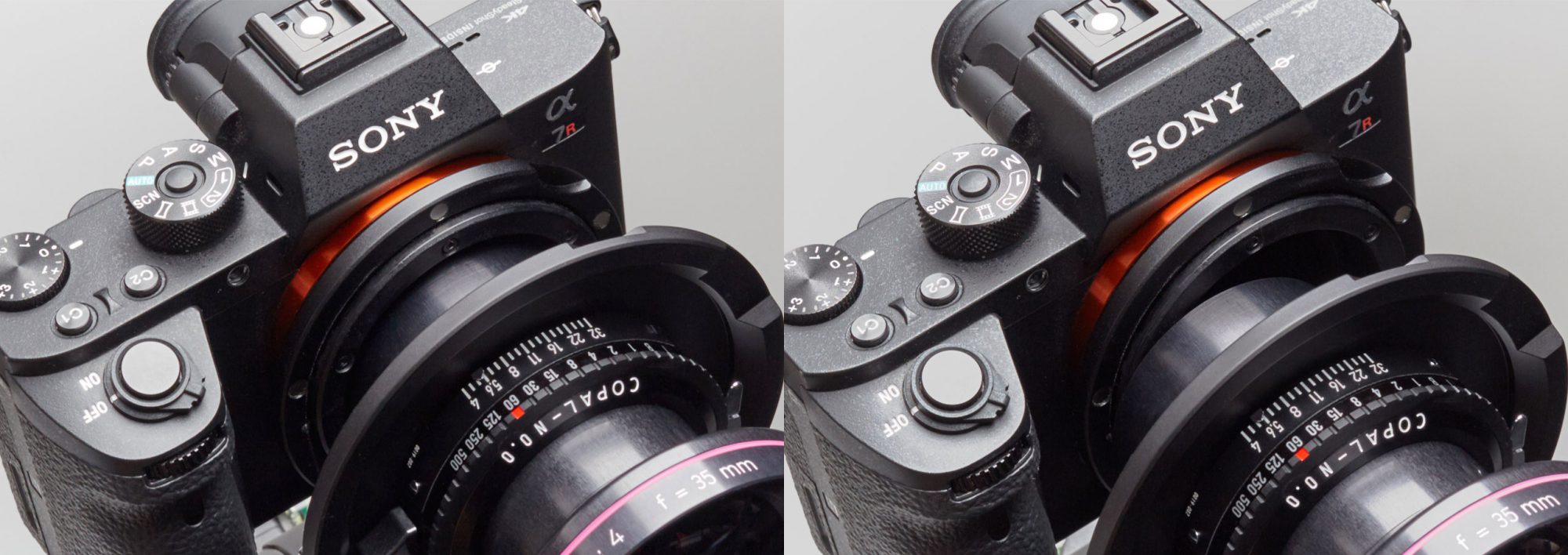
Medium and large format lenses, will comprise our Option # 1. But there are other options to consider as well! You don’t think we’d get through an entire article like this only to give you one option, do you?
So – here’s an idea, you could just use a Canon or Nikon Tilt/Shift lens on your Canon/Nikon/Sony body and forget the whole thing, you conventional thinker you. The newer versions of these lenses (like the Canon 17mm TS and 24mm TS II) are stellar lenses.
But then you’d lack the full capability that the Cambo Actus would provide. And don’t you want that? If life is about limits, why not just blow that concept away? Are you a creative person, or are you a pencil pusher? Sticking with convention (ugh) and bypassing the Cambo Actus, by sticking tilt-shift lenses on your camera, you could correct your vertical lines, but you couldn’t also move that tree butting into the picture on the left frame (not without moving your tripod and re-wrestling with the point of view). You could apply some tilt to a 3 shot stitched landscape pano, but you could not also adjust the vertical point of view or remove some foreground or also apply a swing to bring in some of the nearby trees on the right side. Man, it would be great if you could use the Canon Tilt/Shift lenses on the Cambo Actus, and then have those additional movements. Oh, wouldn’t it? I wish.
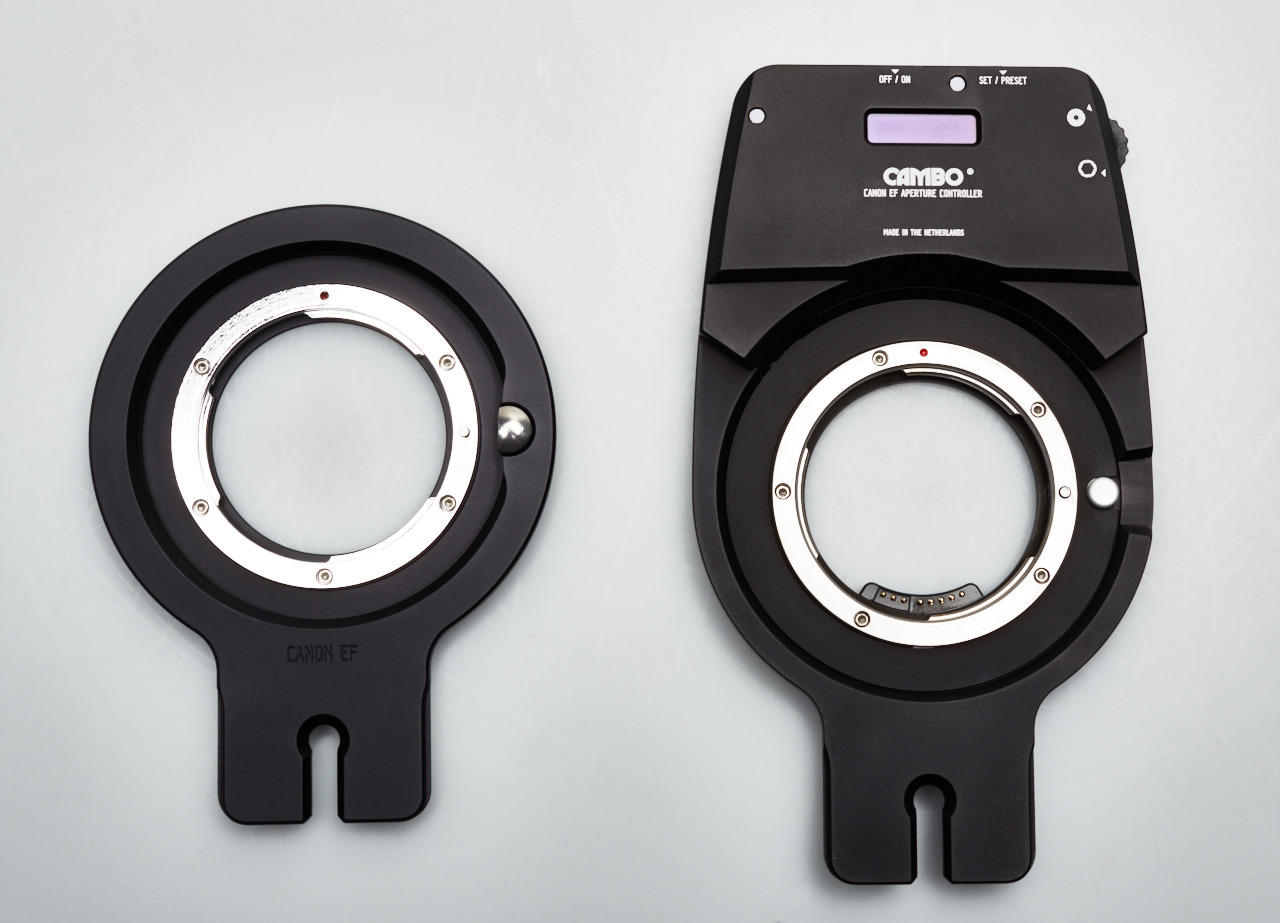
Well, wishes can come true, and this is Option #2. Cambo makes a Canon lensboard adapter with no way to control the aperture on a modern Canon lens. Now – workaround! – if you take a modern Canon lens, and mount it to a Canon body and you set the aperture, then, while engaging Depth of Preview Mode, remove the lens, the aperture sticks. So if you often shoot at f/11, for example, you could use the lens on the Cambo Actus quite a bit, knowing that you won’t be changing the aperture much, and even if you needed to, you could stick it on your host Canon, and perform the same trick again. But that’s cheating! Not to mention inconvenient.
But there is also the Cambo EF Aperture Controller.
First Look: Cambo Canon EF Aperture Controller
This is a recently released product from Cambo that can electronically speak to the Canon lenses, even 3rd party lenses, like a Zeiss or a Sigma, all sorts of lenses. It’s like, a galactic product! This allows you to control the aperture of the entire lineup of modern Canon lenses, including the Tilt/Shift lenses. Ah-ha! That’s sneaky, and awesome, but totally legit. Highly recommended. This shouldn’t be possible. But Cambo made it possible. They are geniuses. In fact, I’m going to throw the Cambo logo in here at least one time, because they rock.

There is a 3rd Option (why is there always a 3rd option?), and it’s not a set of steak knives. It is the Cambo 24mm Actar Lens, a quality wide lens mounted in a retro focus chassis, that provides a larger flange distance, and about 10mm – 12mm of shift movement with good results. This is the first Cambo lens in the Actar line, with more to come. Now, let’s just get it out in the open, there have been whispers and nasty rumors to the effect that this Actar 24mm is really a re-badged Samyang 24mm TS lens. OMG! They have the same number of optical elements, the filter thread is the same size. No one knows for sure, but they conspicuously have never been seen in the same place together at the same time! Results tell the only story I’m interested in, which is that a good copy can approach the performance of the Canon 24mm TS II. Which means, the lens can be quite good.
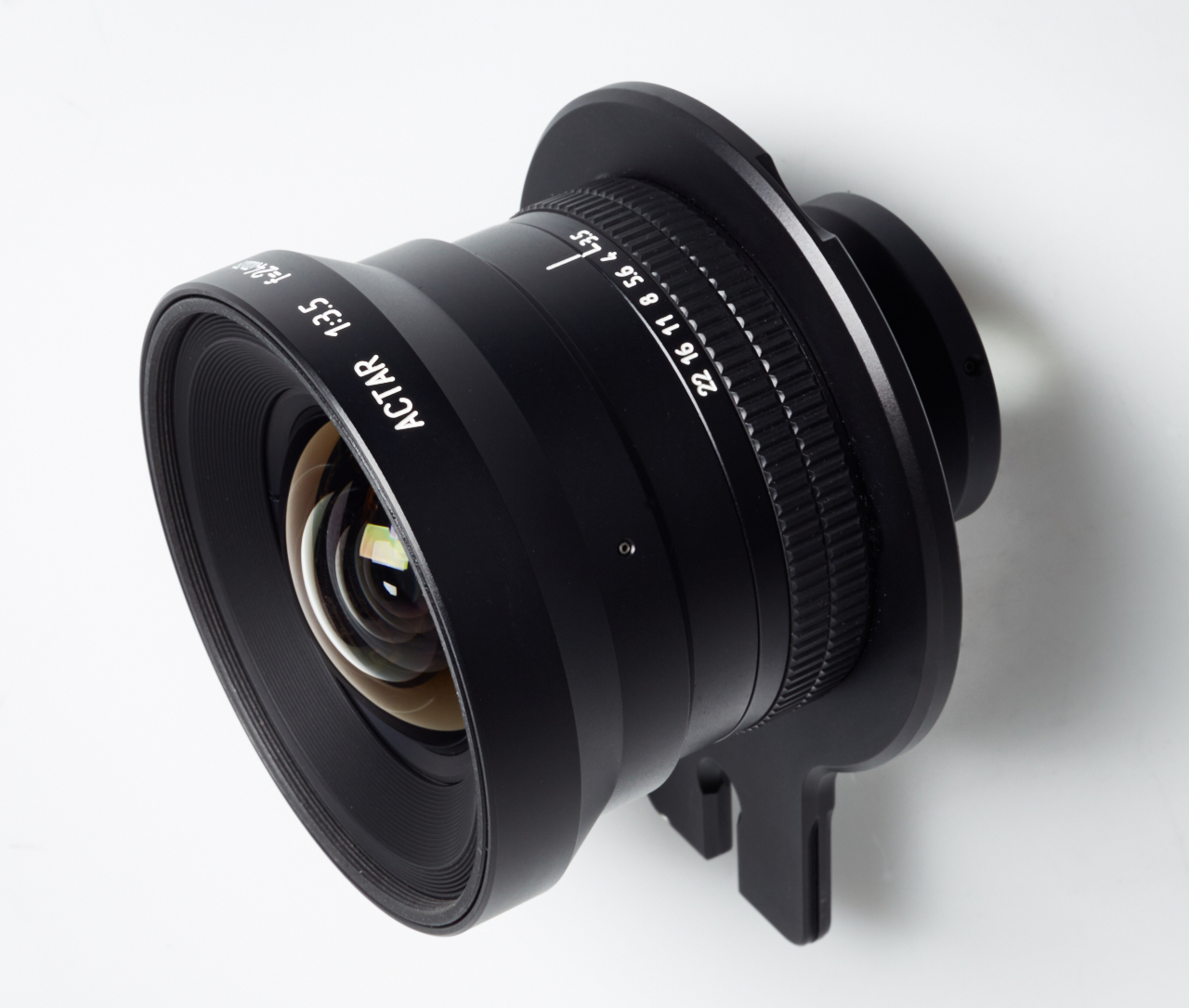
The advantage of the 24mm Actar, which already includes a pre-mounted lensboard, is that it has a handy (yes, pun intended!) manual aperture ring, and a very reasonable price, and cost advantages over the alternative Canon 24TS II. The Actar 24 ($1,690), is $534 less than the Canon 24TS II + Cambo Canon Lensboard ($2,224) and $1,563 less than the Canon 24TS II + Cambo EF Aperture Controller ($3,253).
A Summary of Wide Angle Options
So to summarize this long journey for wide angle nirvana, read the crib notes below:
Option #1: Medium and Large Format Lenses with Manual Aperture Rings
Use a traditional medium format lens if you only need wide, and don’t need ultra wide, and can accept less than state of the art performance at the edges. If you don’t need quite as wide, a large format lens may provide superior edge performance.
– Pros: Tons of movement for medium format lenses, high quality large format options, potentially inexpensive, and lots to choose from.
– Cons: Edge performance for some medium format lenses can be weak, some lenses may be tough to find on used market.
Option #2: Canon/Nikon Tilt Shift Lenses + Cambo Canon/Nikon Lensboards or Cambo EF Aperture Controller
– Pros: Widely available. Some quality optics. Additional movements beyond one way shift and tilt. Use any Canon mount lens.
– Cons: Pricey if you don’t already own the Tilt/Shift lenses.
Option #3: Cambo 24mm Actar Lens
– Pros: Good results, 10mm – 12mm shift possible. Affordable vs the alternatives. Does not require mirrorless body for infinity focus.
– Cons: Dedicated to the Cambo Actus, won’t work on other cameras (like a Canon DSLR, for example).
Remember This
If you’d like to investigate these options, contact us, we can discuss in detail. Or we can offer an evaluation rental of a Cambo Actus and lenses. Or we can shoot a test scene per your specifications with any lens you own or that we have in our inventory, and provide you with raw files. What are you waiting for?



